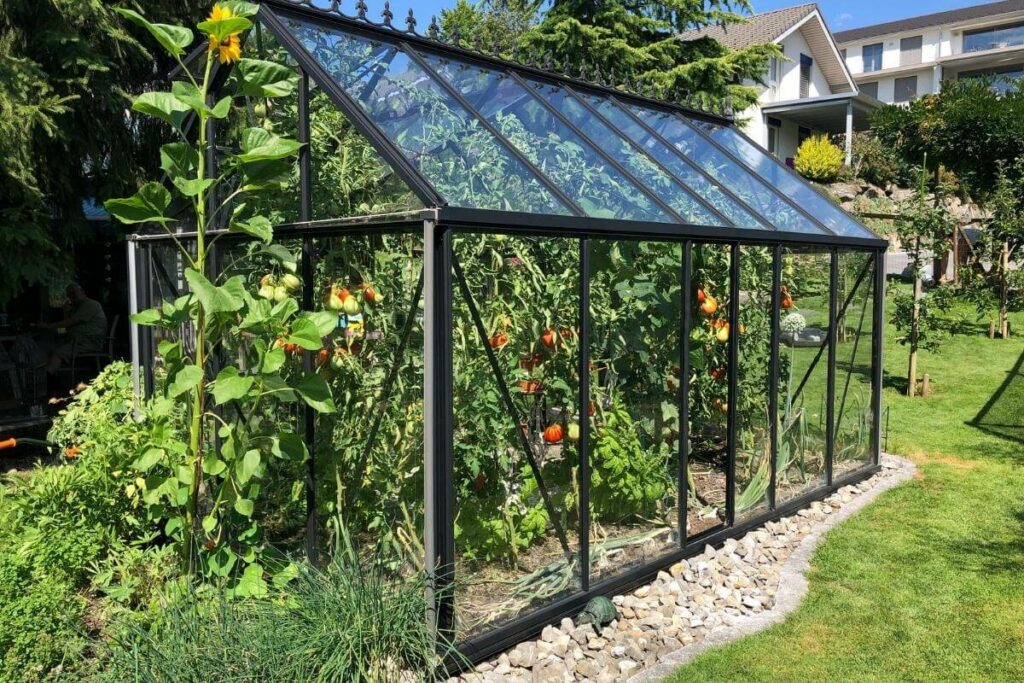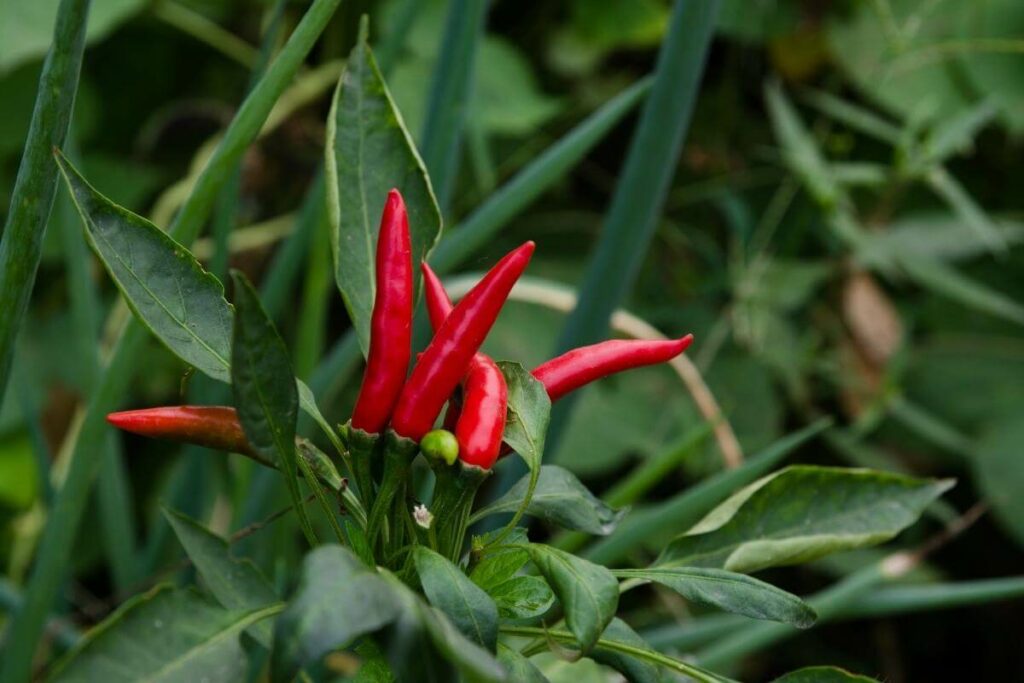Chilies are incredibly easy to cultivate at home and do not require any special gardening equipment.
This is because a single plant may produce up to a hundred chilies.
They’re an excellent addition to the kitchen garden, mainly because they thrive in pots and planters.
Chili plants’ roots are also not too deep. A chili plant may be grown in a pot that is just 8 inches deep and 5 to 6 inches wide.
There are several options for how to grow your chili plants faster. For instance, keep your seeds warm, and use season extenders or indoor lights to help them develop quicker until the warm weather arrives. Make sure to plant them in full sun, as chili requires a lot of sunlight to grow big and robust. Choosing quicker growing chili plants with shorter growing seasons will allow you to harvest more quickly.
Methods for Faster Chili Seed Germination
Method 1
Before planting, soak the seeds for 10 to 12 hours or overnight.
This technique has been shown to shorten germination time by 20 to 30%.
Germination can occur in as little as six days under optimal conditions.
Method 2
Wrap the chili seeds in moist tissue or paper cloth for three to four days.
Wrapping the seeds with damp linen or tissue for three days reduces generation time by 40%.
This approach yields a germination period of 5 days.
Method 3
Soak seeds in wet compost before wrapping them in a plastic bag.
This is the quickest method for growing chili seeds. In reality, it is a hybrid of all known ways with a bit of additional oomph.
Moisture and temperature will be retained inside the plastic bag, and the compost will slowly release nitrogen, promoting root development.
With this approach, chili seeds germinate in 4 days.
Decision To Make: This method is quick but not simple. It isn’t easy to separate the germinating seeds.
Method 4
Insert your standard seedling tray inside a greenhouse or plastic bag.
Although this is not the quickest technique for germinating chili seeds, it is the most widely used.
You may use this approach to cultivate seeds inside in the absence of direct sunshine.
How to Accelerate the Growth of Chili Plants?

Mix 50 percent high-quality organic compost into the potting soil.
You should utilize Nitrogen-rich soil to grow a chili seedling. For the first month, this Nitrogen will aid in fast development.
Once a month, apply NPK 19:10:19 to the soil:
- Apply an equal amount of NPK or Urea, DAP, and potash to each plant once a month for faster growth.
- Apply a half teaspoon of this mixture to each plant.
- Water the plants after applying chemical fertilizer.
Regularly remove dead branches and dried fruits. Deadheading is essential and highly recommended in chili.
It is critical to maintain the plant healthy and to promote quicker development. If you don’t remove the wasted branches and fruits, the nutrients will be used up, leading to a nutritional shortage.
For The Persistent: Directly place the chili plants in the sun. This step, believe me, makes a huge impact. With one easy modification, you may see a 100 percent increase in one month.
Tips for a Good Chili Harvest
To control growth, remove the first few blooms.
It is beneficial to pluck the first few blooms to promote plant development and, consequently, fruiting in the long term.
Pinch the tips regularly. When the branches reach a height of 10 to 15 cm, pinch them. This will cause the plant to grow more densely.
Remember that chili blossoms only develop on fresh branches.
Don’t allow the plant or soil to dry up totally. The chili plant can withstand a hot, dry summer, but the flowers cannot. So, for the most significant results, keep the soil wet and nutrient-rich.
When the flowering period is over, trim the branches and fertilize them regularly.
Pruning is required to stimulate new branch development and subsequently fresh flowering in chili. Fertilization and adequate watering are also critical for preventing shock after trimming.
Always prune chili plants in the evening; never do this during the day.
Regularly apply Epsom Salt to the chili plant. It is optional to use Epsom salt, but it is a miraculous cure for the chili plant.
Epsom salt contains magnesium sulfate, which aids the plant’s absorption of nutrients.
How to Take Advantage of Water Walls, Greenhouses, Or Hoop Houses?

Use water barriers to help chili plants grow quicker.
They are excellent seasoning extenders, mainly when used with chili.
They are simple plastic “walls” filled with water that form a teepee around your seedling and use solar heat to maintain the temperature comfortable at night and even warmer during the day.
When you apply water walls to chili seedlings in the spring, they grow twice as big as their unprotected counterparts. Remove the water walls after the temperature has reached 60 degrees Fahrenheit or above at night.
You may also utilize a greenhouse or hoop buildings during the chilly spring months to keep your chili warm and safe. These, of course, assist with spring hail storms.
Remember This: The most crucial aspect of rapidly growing chili is to keep them warm. Some individuals use black plastic to warm their soil in early spring to harness sun heat to prepare the ground for growing chili.
How to Make Use of Compost?
Composting your lawn clippings, leaves, and kitchen waste is an excellent method to enrich your soil and help your chili plants grow.
This is because it is alive with worms and other creatures that supply nutrients to your plants, compost is the finest fertilizer of all.
The addition of compost to your garden beds for the whole of the season is a fantastic method to increase your soil’s organic matter and minimize the need for fertilizer.
Backfill with soil after burying compost beneath each plant. This permits the plants’ roots to develop into the buried compost, which offers nutrients throughout the season.
During the summer, you may also top-dress your garden with old compost; however, don’t place it too close to the stems because compost might burn plants.
Also, cover your chili with leaf mulch or grass clippings to help preserve soil moisture and minimize watering requirements.
This mulch also helps stabilize soil temperatures and feeds the worms and other creatures that nourish your chili plants.
How to Start with A Fully Mature Plant Each Year?
Some chili plants have a lifespan of 5 to 10 years.
The challenge is to keep them from freezing; most chilies despise cold weather and begin to wither when temperatures fall below 50 to 60 degrees Fahrenheit.
So, if you have a bright sunny window or supplementary lighting, you may bring it in. You may also clone your chili to decrease the possibility of pests entering your home.

Choose a healthy 6″ stem, cut the leaves, place in water for a few weeks to start roots, then transplant into excellent well-draining potting soil or a hydroponic system and grow indoors throughout the winter months.
To assist roots, develop quicker, dust the bottom of stems with a rooting agent before placing them in soil.
Chilies root best when exposed to auxiliary light or indirect bright light rather than direct sunlight from windows. Do not overwater them and keep them in a warm environment during the winter months.
When the temperature rises to 60 degrees Fahrenheit or above, even at night, transplant or move the plants outside.
Remember to harden them off first by bringing them out for a few hours each day for a week before putting them outside overnight.
After they’ve spent a night or two outside, plant them early in the morning or in the evening, so they don’t get husk by the hot sun. Water them, but don’t overdo it.
Watch Out: Chili plants are known for “drowning” due to overwatering.
Temperature Requirements
Every variety of chili thrives in hot, humid conditions.
Sowing seed is best when the nighttime temperature rises over 16 degrees Celsius or approximately 60 degrees Fahrenheit.
Temperature below 15 degrees Celsius will entirely halt seed germination. A mature chill plant may thrive at temperatures as low as 13 degrees Celsius, but it will not flower.
Temperatures between 16 and 20 degrees Celsius are excellent for any chili plant.
Direct sunshine and a temperature of at least 63 degrees Fahrenheit are necessary for optimum flowering.
Final Thoughts
Chilies flourish in many breeders’ houses throughout the winter months.
All seeds are sprouted on the windowsill, and plants from the previous season spend the winter in a sunny location. If you can access a balcony or a yard, you can cultivate chili plants indoors all year.
It is strongly advised to use seeds with a faster germination and development rate for quicker growth.
However, the availability of seeds has a significant influence on this issue. You may purchase a variety of fast-growing chili seeds online.
Chili plants typically demand light, well-drained soil. Add a tiny amount of compost to it and thoroughly mix it.
Keep the soil wet but not soggy.
Depending on the weather, water every other day or every two days. Watering should be done in a moist to dry cycle.


